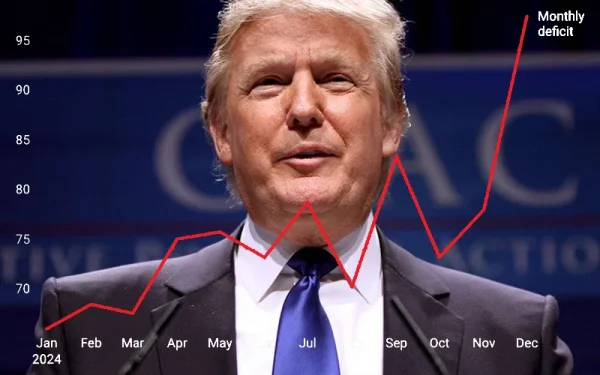Global Santas bring Christmas cheer worldwide

This photo was accessed via Google Images under the Creative Commons license.
The legend of St. Nicolaus has mystified children for generations, but not every country celebrates him the same. From the U.S. to Asia, there are near-limitless interpretations of the benevolent Father Christmas.
For millions of children across the globe, December 24 is one of the most exciting nights of the year. They go to bed in anticipation of the next morning, hoping that their efforts to behave haven’t landed them on the naughty list this year and believing that Santa Claus will bring presents for them as they sleep. But where does Santa come from? And how does he deliver gifts to almost 2 billion children in one night?
As it turns out, not every country has the rotund, benevolent Santa we do. While many countries have unique adaptations, Germany, Italy and Japan specifically each have their own spin on Father Christmas.
Santa Claus (United States):
Santa Claus (or Clause, as we celebrate him in the U.S.) has a long history dating back to the third century, A.D. He is based off a Catholic monk, St. Nicholas of Myra (near modern-day Turkey). St. Nicholas gained admiration and popularity for his dedication to charitable works and kindness. He is said to have given away all of his wealth and distributed it to the poor and sick members of his community.
Dutch immigrants are likely responsible for bringing legends of St. Nicholas to the U.S. by celebrating the anniversary of his death, annually on December 6. The nickname for St. Nicholas in Dutch is Sinter Klaas, so it wasn’t a far leap for English-speakers to derive Santa Claus as celebrations of him spread.
However, the pop-culture interpretation of Santa the United States celebrates today didn’t come about until celebration of the Christmas holiday saw a rejuvenation in the early 19th century. With this revival, stores started to produce Christmas shopping advertisements, often with an image of Santa Claus attached to them. This marketing, coupled with “live” Santas in department stores and the institution of the Salvation Army Santas to collect donations in the 1890s, skyrocketed the popularity of the American Santa and cemented him as a mainstay in popular culture for generations to come.
der Weihnachtsmann and Christkind (Germany):
Unlike in America, Germany’s Santa figure, der Weihnachtsmann (“the Christmas man”), does not bring gifts to children on the night of December 24. Instead, he visits children on December 6, putting candy, nuts, or other small gifts into their shoes.
Germany also has das Christkind, literally “the Christ child.” Das Christkind is an angelic female figure who brings children gifts on Christmas Eve. She arose during the Protestant Reformation as a non-Catholic Christmas figure for children to celebrate.
German children who are naughty may not be visited by the Christmas man or Christ child. Instead, they may receive a visit from Knecht Ruprecht, Krampus or Belsnickel. Knecht Ruprecht is usually dressed in a long brown tunic, and customarily asks children if they know their prayers. Those who do are rewarded, but those who do not are often punished. Krampus is a horned devil figure who also terrorizes naughty children. Legends of Krampus are not unique to Germany, though, they have evolved in slight variations all over central Europe. Belsnickel is the final counter-Santa figure in German culture, and his lore comes from the Pfalz region of Germany. He dresses in torn rags and sometimes a devilish mask, punishing misbehaved children across the nation.
La Befana (Italy):
La Befana, a witch-like character with a broom, is one of the oldest charitable holiday figures, having been celebrated in Italy since around the eighth century. She rides all over Italy on her broomstick on the night of Epiphany Eve, annually on January 5. She leaves candy and gifts for well-behaved children and lumps of coal for the misbehaved.
Italians are also visited by Santa Claus, or Babo Natale in Italian, although he didn’t gain popularity until the same time that the American version did as well. Today, many Italians leave out stockings for him to fill on the night of December 24.
Hoteiosho (Japan):
Since Christmas is originally a Christian holiday, it is not as widely celebrated in Asia or Japan. Still, some people take the time to celebrate it, albeit with their own spin on the more European traditions. In Japan, the Buddhist monk Hoteiosho takes the place of St. Nick. Hoteiosho is one of the seven gods of fortune in Buddhism. He is a chubby old man who carries a sack of toys around for well-behaved children. He has eyes in the back of his head so that he can see when children are behaving all year round.
Christmas is celebrated throughout the world, with many countries creating their own versions of the folklore and tradition around the season. However, many people don’t know much beyond their own Santa. Despite this, the general appeal of a Santa figure remains the same.
Junior Emma Bowman said,“First of all, just the magic of the season makes kids’ childhood more fun and gives them so many core memories. It’s behavioral, too. ‘Santa’s watching’, you know, so be good. It gives kids something to believe in, to celebrate.”
“I feel that our own Santa is not as interesting as the version in other countries. He is just this jolly old man that likes cookies and giving presents…[but] I believe that we have a Santa figure as a part of our culture because it gives children something to believe in and something for the parents to make sure that their children are behaving well,” agreed Freshman Rogan Cavanaugh.
Even those who don’t celebrate Christmas can still find joy in catching a glimpse of Santa at malls or in movies. Santa Claus has mystified and rewarded children around the world for generations. This year, consider researching more about Christmas traditions in other countries and discovering the different versions of Santa around the world. Have fun this holiday season and happy holidays from The Hiller staff!
Outside of school, you can usually find Emma dancing, solving word puzzles, buried deep inside a book, or dreaming of some new and delicious dessert to...





